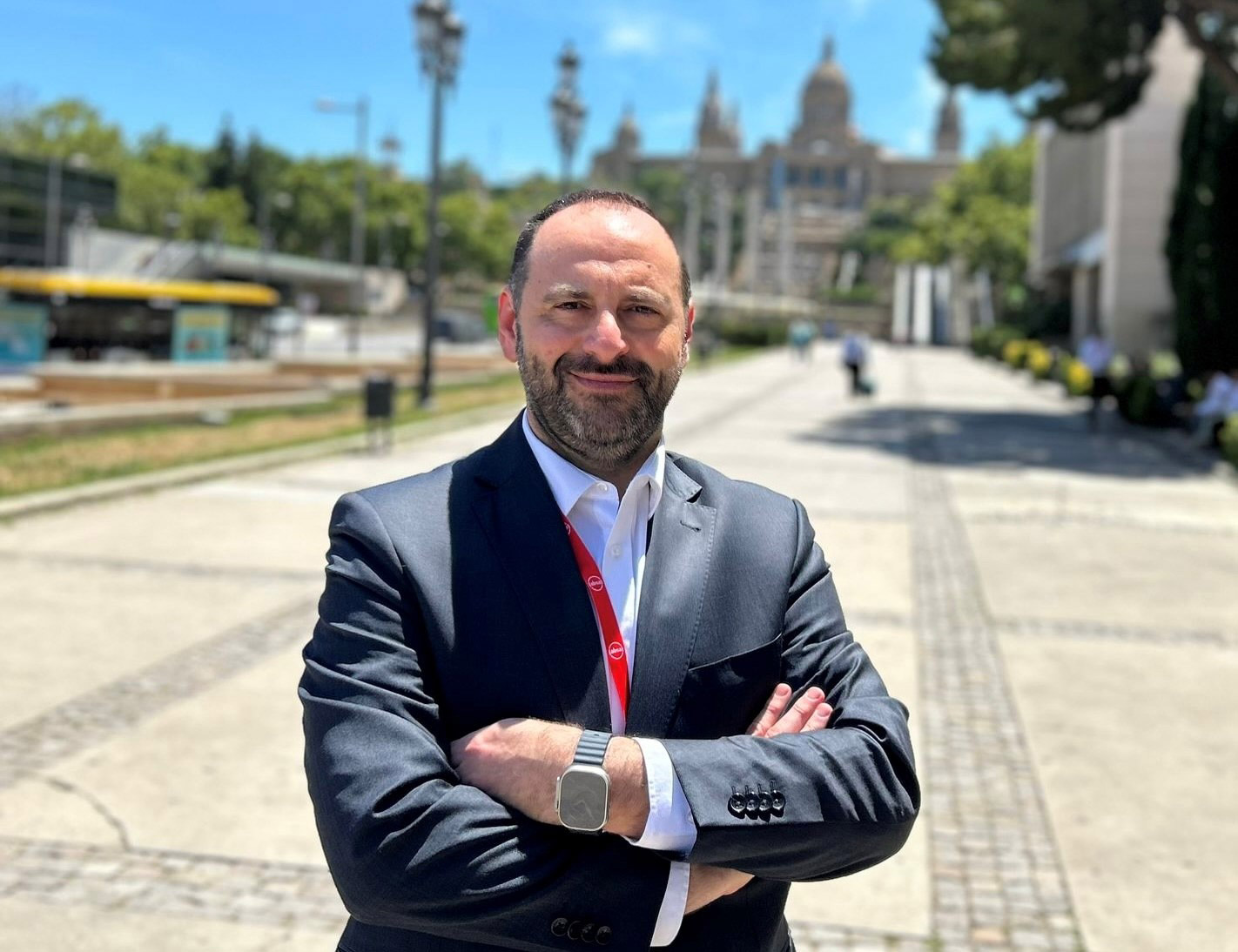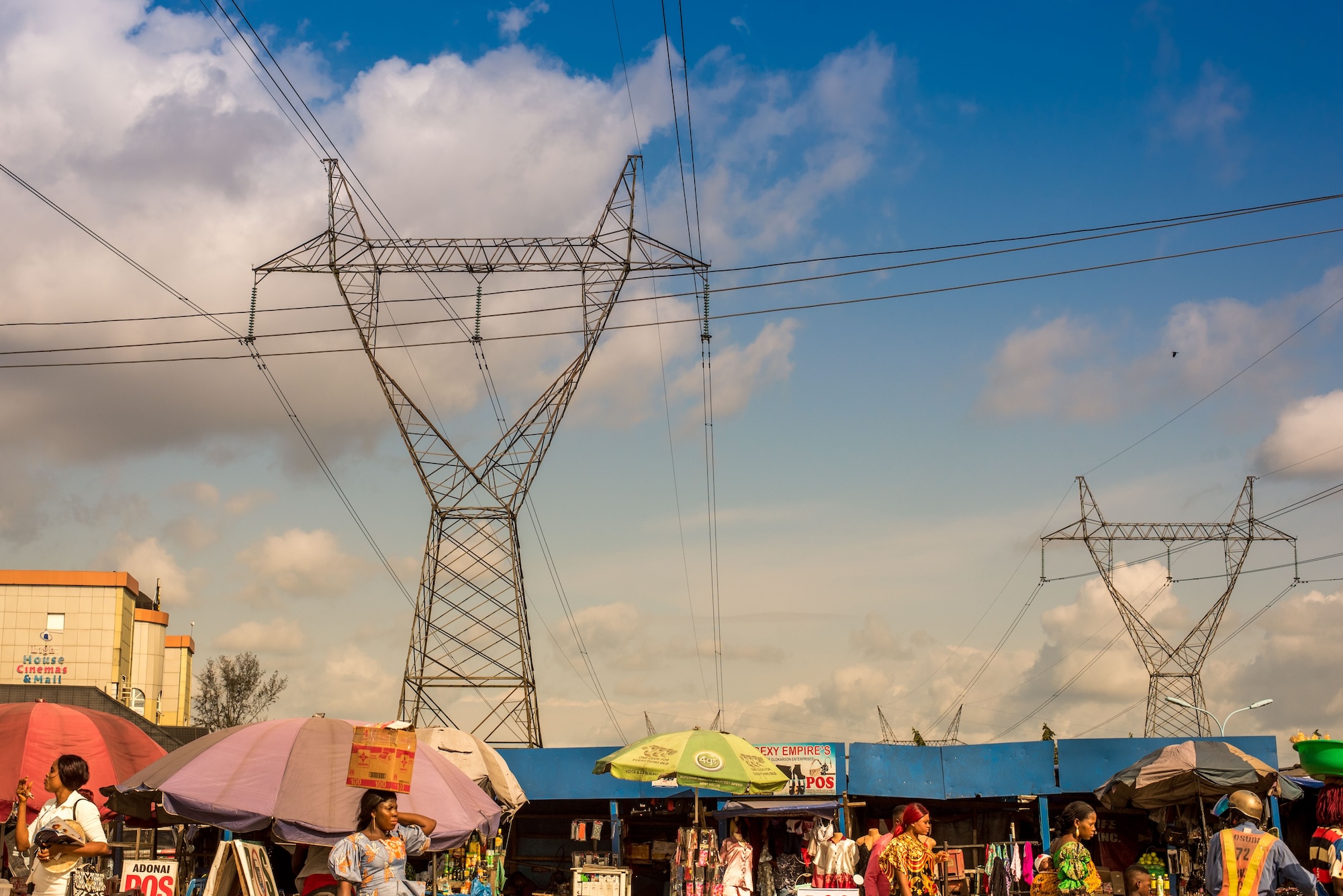Bernard Dagher, who heads up growth and strategy for the Middle East and Africa (MEA) at GE Vernova’s Grid Solutions business, often reminds people why there are almost no landlines in Africa. As the story goes, cell phones arrived on the vast continent before it had strung up the thousands of miles of telephone wires needed for landlines. Seeing that the landline’s days were numbered, African countries “leapfrogged” the technology, he says, and built cell phone towers instead, which were faster and cheaper than fixed-line networks anyway.
Now Dagher thinks that parts of Africa are preparing to vault past another technology: the conventional power grid. He says that parts of many MEA countries are well positioned to build the “grid of the future” from scratch, allowing them to bypass the era of the conventional network and avoid years of painstaking upgrades. “Some parts of these countries are like a blank sheet of paper,” he says of their relative lack of grid infrastructure. “But that’s a real opportunity for them.”
He explains the paradox. Better-developed MEA countries might boast established transmission and distribution networks, but their conventional grids aren’t always prepared for the future. “Tomorrow’s energy systems must accommodate significantly larger proportions of variable renewable energy from solar, wind, hydro, and other sources,” says Dagher, who spoke from the sidelines of the African Energy Forum in Barcelona, which took place June 25–28.
“To accommodate these changes, we will need solutions like digital substations, flexible alternating current transmission systems [FACTS], and predictive software applications,” says Dagher.
It can be costly, time-consuming, and painstaking to haul a conventional grid into the renewables age. But Africa’s power-hungry countries can build future-proofed grids from the get-go. “They don’t need to build everything in the conventional way and then convert them into something else 30 or 40 years later,” says Dagher. “They can start with the end in mind.”
Daunting Mission
Parts of Africa present a special case as the world seeks to electrify and decarbonize. Hundreds of millions of people on the continent still lack uninterrupted access to power, with the worst problems in sub-Saharan Africa, where just one in two people have reliable electricity. The continent’s energy use is also heavily dominated by fossil fuels, with coal, natural gas, and oil-derived liquids accounting for almost 76% of the power generated in 2020.
But Dagher is optimistic about tackling both issues in tandem. While boosting access to power will increase Africa’s total electricity usage, that doesn’t mean that the continent’s emissions will follow suit, because countries can boost the share of renewables on grids and electrify sectors that still burn fossil fuels. Dagher gives the example of the transportation sector switching to electric vehicles (EVs). “You can increase total electricity usage on a greener grid while removing the burning of gasoline from somewhere else,” he says. “You can optimize the whole equation.”

Indeed, Africa is on the cusp of a renewables-powered electrification boom. Electricity is the backbone of the continent’s new energy systems, says the International Energy Agency (PDF) (IEA), and also home to 60% of the world’s best solar resources. By 2030, solar power, which is already the cheapest source of generation in many parts of Africa, is expected to be the most competitive across the entire continent. The agency forecasts that renewables could account for more than 80% of new capacity additions in Africa by the end of the decade.
Driving that shift will be millions of “prosumers” — households and businesses who don’t just consume power from the grid but produce for it, usually by feeding in power generated from rooftop solar installations or stored in the batteries of their EVs. The IEA notes that “flexibility is the key” if Africa is to harness the ebb and flow of renewable power from this constellation of bidirectional nodes.
Master Orchestrator
One thing’s for sure: Africa’s flexible friend won’t be the conventional grid, which was designed to support a continuous, one-way supply of electricity from a few centralized, fossil-fuel-burning power plants and nuclear plants to meet predictable demand. The power grid of the future will need to be a master coordinator and orchestrator of millions of new nodes and billions of fluctuations, and ensure that supply always meets demand without a single electron being wasted.
For example, African grid operators could install digital substations into their high-voltage transmission lines, rather than build conventional ones. Digital substations can ferry mountains of data through a few skinny fiber-optic cables running through the switchyard, rather than hundreds of miles of copper wires lying in shallow trenches, says Dagher. This allows operators to realize huge savings on materials, dramatically shrinks a substation’s footprint on land, and saves the toil of digging deep trenches.
But digital substations don’t just alleviate the problem of too much subterranean spaghetti. Substation operators can analyze these mountains of data to obtain insights about their facilities, which they can use to improve performance, avoid glitches, and schedule maintenance. They’ll have a real-time view of everything from how well the whole system is running to the composition of the gas dissolved in the oil that insulates their transformers.
While they’re at it, operators could also build FACTS, the systems that help to smooth out the journey of electrons on the grid. “The more renewables you have, the more you need to deal with big fluctuations in supply and demand, and frequency variations,” says Dagher. “It’s worth injecting these devices into the grid from the get-go, rather than installing yesterday’s grid.”
Operators can add AI into the mix too. A good example of this is GridOS, the first software portfolio designed specifically for grid orchestration. The portfolio uses AI to help utilities navigate the complexity that comes with working toward a more resilient and sustainable energy grid. From helping utilities predict the impact a particular storm will have on their operations to enabling them to increasingly integrate distributed energy resources like solar, battery, and electric vehicles, AI-driven software is having a very real and beneficial impact on electric grids around the world today.
GE Vernova, whose installed technology base helps generate up to one in every four electrons in the world, and is a leading player throughout the entire value chain of the power industry, can play a major role in future-proofing the African grid. “There is obviously no ‘one size fits all’ solution for the continent,” says Dagher. “But we have worked with nearly every single MEA country for decades, and can help them plan their journey, whether it’s a holistic plan of supply, integrating renewable energy, or improving their gas turbine efficiencies.”
But the executive warns that the clock is ticking. “Since COVID-19, there have been huge pressures on the global supply chain, so systems that used to take a year to deliver can now take up to three or four,” he says. “You can’t leave these things to the last minute.”
Read more about the African Energy Forum here, see our story about a hydrogen first for Africa, and listen to this podcast about the future of energy in the Middle East.
